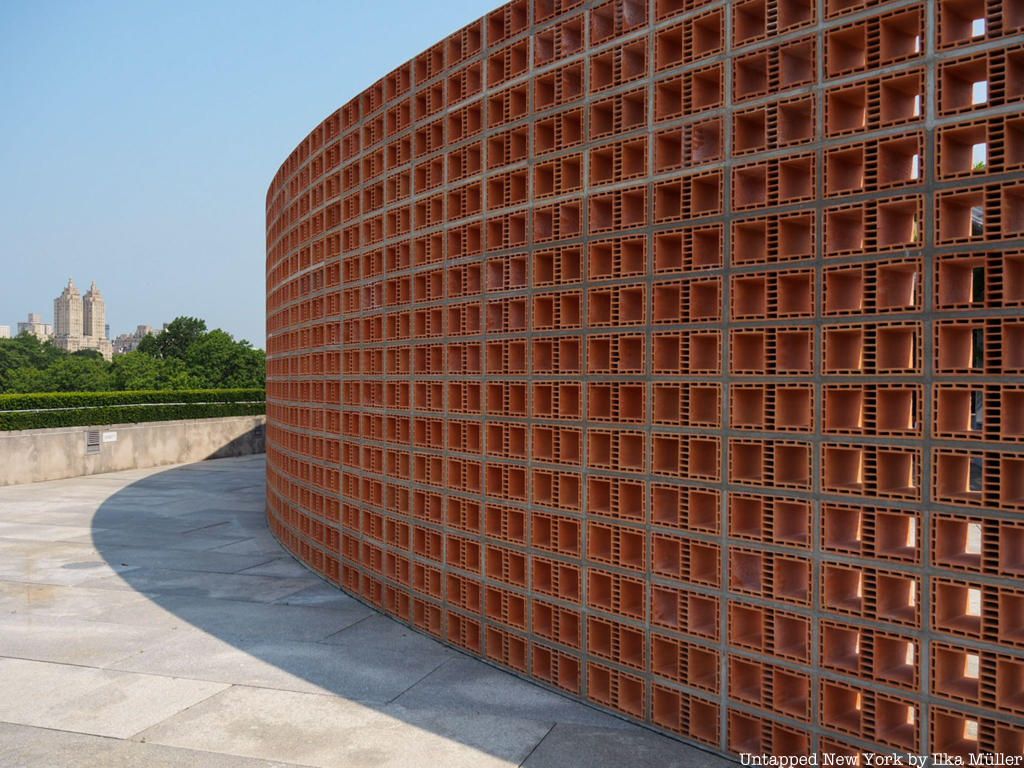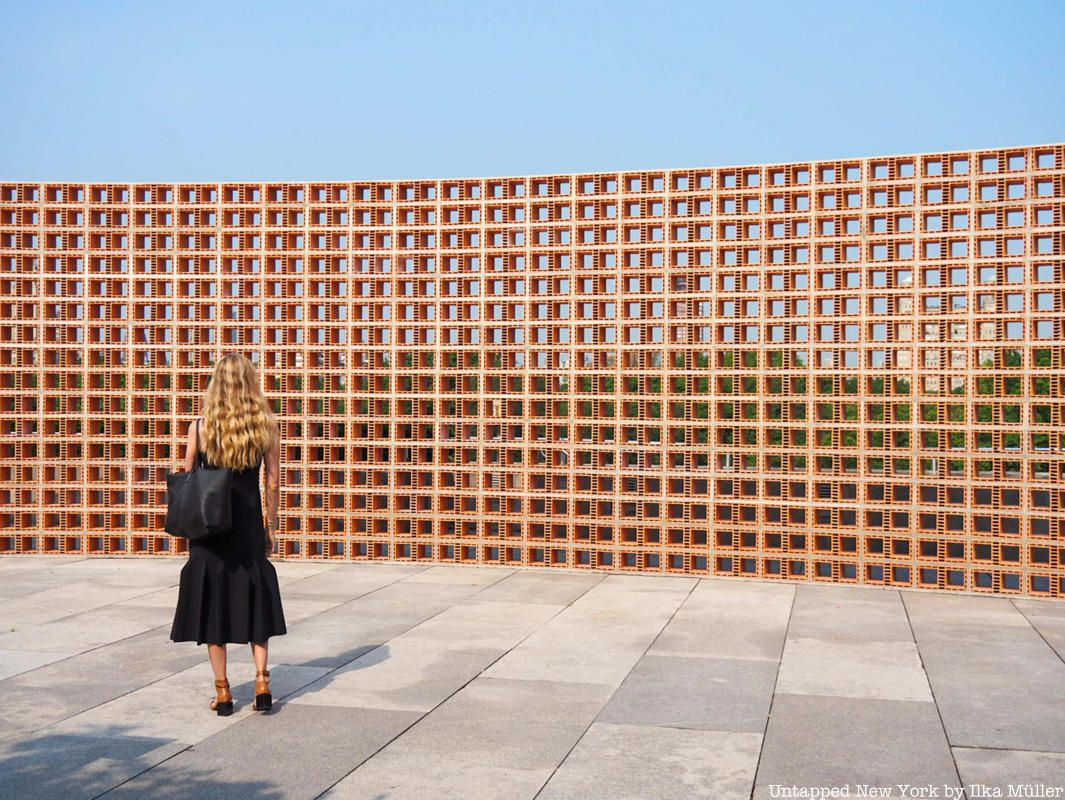Last Chance to Catch NYC's Holiday Notalgia Train
We met the voices of the NYC subway on our nostalgia ride this weekend!


This morning at the Metropolitan Museum of Art, the museum unveiled several new exhibits, including this year’s Roof Garden Commission by Héctor Zamora, Lattice Detour. The site specific installation on The Met’s Iris and B. Gerald Cantor Roof Garden is the eighth in the series, which has included last year’s work ParaPivot by Alicja Kwade, a haunted house sculpture called Transitional Object (PsychoBarn) by the acclaimed British artist Cornelia Parker in 2016 and giant alien-type sculptures We Come In Peace created by Pakistani artist Huma Bhabha in 2018.
 All photos by Ilka Müller
All photos by Ilka Müller
From a distance, Lattice Detour looks like an abstract sculpture, its material construction not completely obvious. What’s apparent is the disruption it provides to the view so traditionally celebrated and embraced by past exhibitions. But this move is deliberate. According to the Museum, Zamora “intends for us to have this initial response: such is the impact of barriers that thwart access to open, expansive outlooks on the world.” It perforates our view but intrigues us, and its position on the roof, invites visitors to go around it.

The terra cotta bricks, made of Mexican earth, which form the basic unit of Lattice Detour are open to allow for light and air. It is meant to reference “celosia“, “openwork brick structures found in vernacular architecture of the Middle East, Africa, Iberia, and Latin America that provide shade and ventilation,” states the museum. This type of exposed brick structure may look foreign to Americans and Europeans, but is very much the standard in countries in those regions. In fact, many buildings deliberately leave rebars jutting from concrete roofs to account for future extension of the buildings — when finances can allow. Here, the concrete serves to bind the bricks, stacked eleven feet high, together.

Zamora’s work, according to the Museum “is known for works that engage public spaces and the built environment. In his practice, Zamora reinvents and redefines conventional exhibition spaces, generating friction between the common roles of public and private, exterior and interior, organic and geometric, real and imaginary.” The brick is meant to relate more to the semi-natural environment of Central Park, then the built structures around the museum.

The Metropolitan Museum of Art reopens on this Saturday, August 29, but museum members can access the new exhibitions starting today. The new exhibits include Making The Met, 1870–2020; The Roof Garden Commission: Héctor Zamora, Lattice Detour; and Jacob Lawrence: The American Struggle. Exhibits still on view that opened shortly before the museum’s temporary closure due to the coronavirus pandemic include Sahel: Art and Empires on the Shores of the Sahara (through October 26); In Pursuit of Fashion: The Sandy Schreier Collection (through September 27); and Photography’s Last Century: The Ann Tenenbaum and Thomas H. Lee Collection (through November 30).
Through January 3, 2021, Making The Met, 1870–2020; features more than 250 superlative works of art of nearly every type, from visitor favorites to fragile treasures rarely placed on view. The exhibition will feature rarely seen archival photographs, innovative digital features, and stories of both behind-the-scenes work and the Museum’s community outreach. The exhibition reveals the visionary figures and cultural forces that propelled The Met in new directions since its founding in 1870.
Through November 1, The Met will be showcasing Jacob Lawrence: The American Struggle, which features the little-seen series of paintings “Struggle: From the History of the American People” (1954–56) by African-American painter Jacob Lawrence. Lawrence is best known for his “dynamic cubist” works like his 6-panel Migration Series, which depicted the Great Migration of African Americans from the South to the more urban North. Lawrence’s “Struggle” was originally conceived as sixty 12-by-16-inch tempera paintings, intended to depict “the struggles of a people to create a nation and their attempt to build a democracy.” The series ultimately consisted of 30 panels depicting historical moments from 1775 through 1817, some of which were approached from the lens of the 1954 Brown v. Board of Education ruling.
A complete list of exhibits, reopening guidelines, and COVID-19 precautions can be found on the museum’s website. Next check out, Photos: First Sculpture Depicting Real Women Unveiled in Central Park!
Subscribe to our newsletter